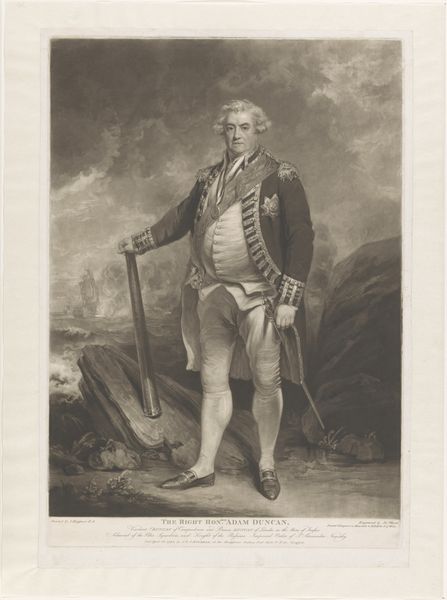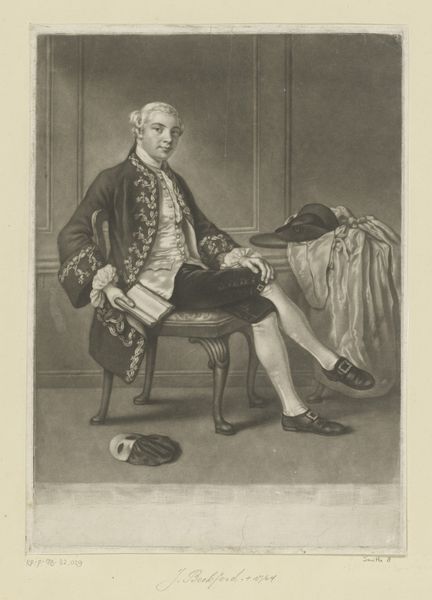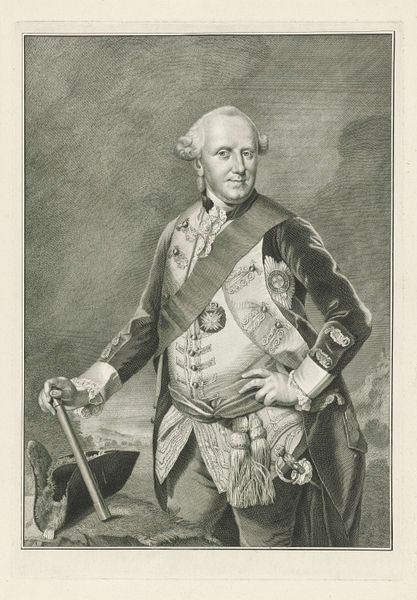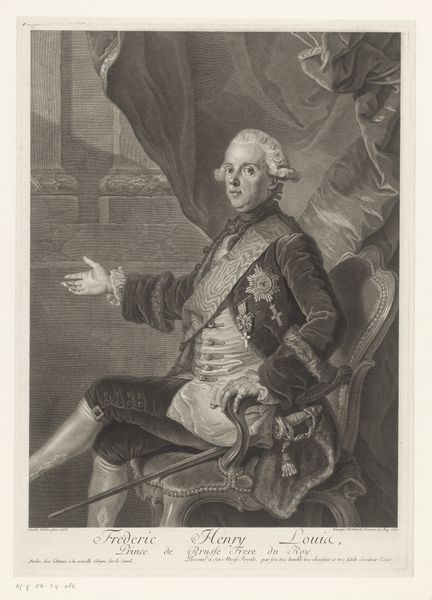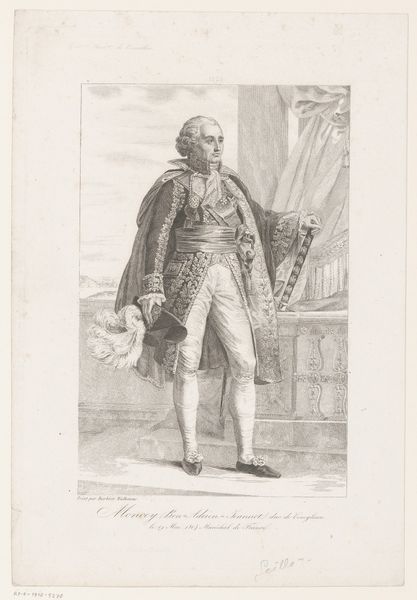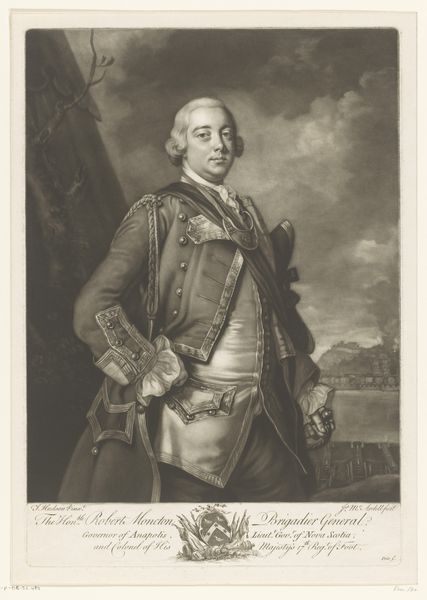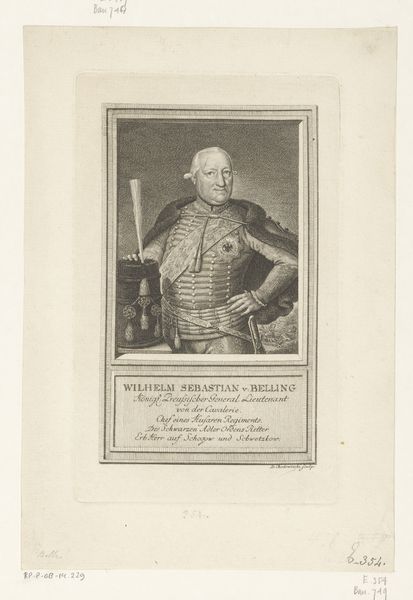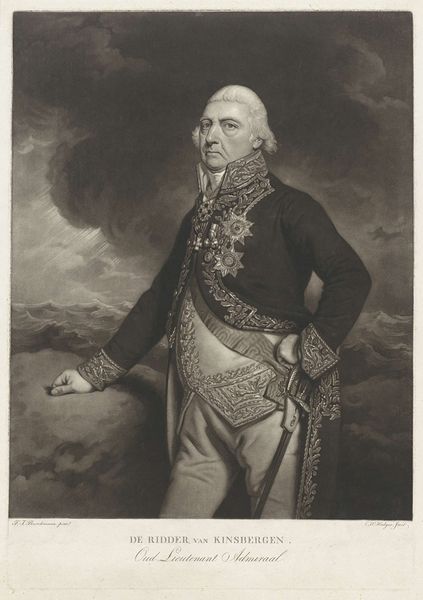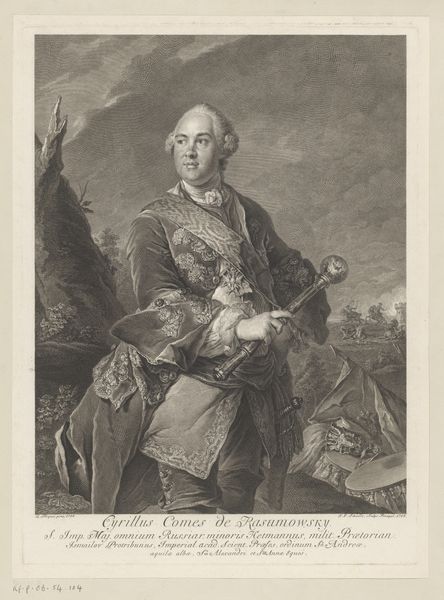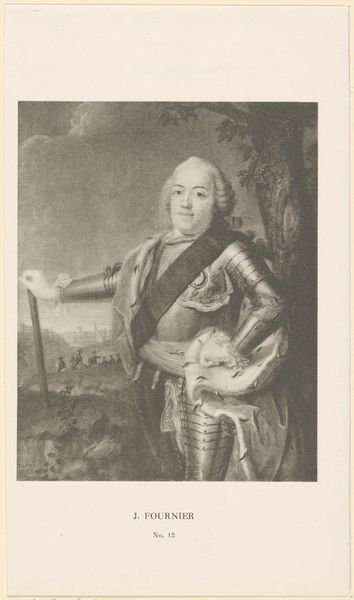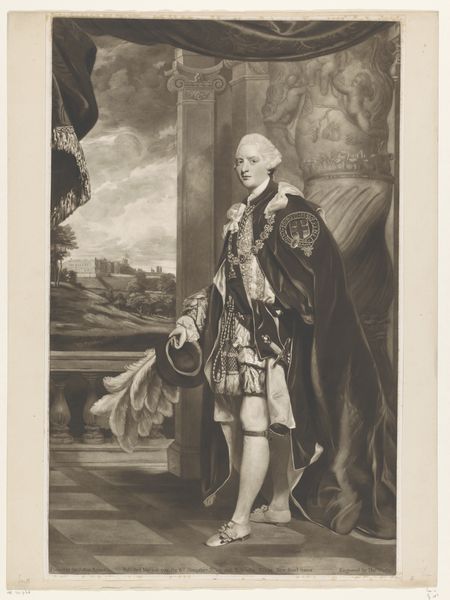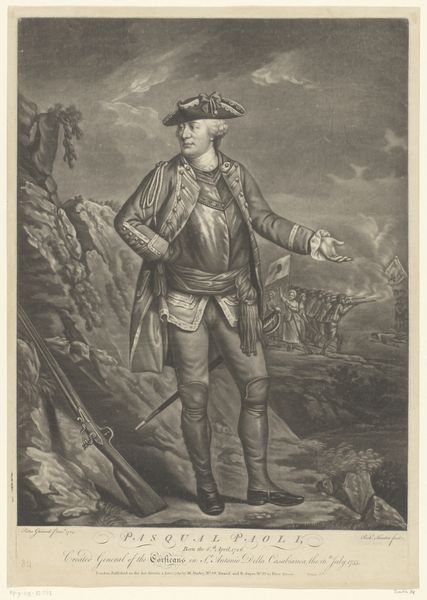
engraving
#
portrait
#
baroque
#
history-painting
#
engraving
Dimensions: height 501 mm, width 346 mm
Copyright: Rijks Museum: Open Domain
Curator: This is James McArdell’s engraving, "Portret van Edward Boscawen," created in 1757. It currently resides here in the Rijksmuseum. What are your first thoughts on it? Editor: He seems to command the tempest itself. I'm struck by the visual power—Boscawen’s assured stance against such a dramatic seascape. It almost feels performative, this stoic pose. Curator: Well, consider the period and the subject. Edward Boscawen was a celebrated Admiral. McArdell and others reproduced portraits of such figures, ensuring their valor and legacy would reach wider audiences, becoming entwined with a very specific national and colonial narrative. Editor: Absolutely, I get the performative aspect, a stage for the projection of imperial power. Boscawen embodies a certain ideal, but the chaotic ocean and struggling ship speak, perhaps, to the immense violence required to uphold this image, revealing a subtext that's about systemic injustice. The aesthetics of power can mask the realities of its creation. Curator: Very insightful. These prints functioned as vital propaganda, cementing public perception of heroes and, by extension, validating British naval supremacy and the colonial project it underpinned. How these images moved, both geographically and through social strata, played a huge role in forming a shared sense of national identity. Editor: How do you think representations like this helped solidify particular masculine archetypes, embedding power within this constructed idea of naval heroism? What happens if we view Boscawen's rigid stance as a symbol of the constraints placed upon masculinity itself? Is he confined to a very strict script? Curator: Precisely! By delving into the symbolic order of these engravings, we unlock a richer dialogue about not only who they depict but also the wider cultural, historical, and institutional factors they are involved with and which shape our interpretations today. Editor: It’s amazing how a single engraving can lead us into broader discussions about power, gender, and coloniality. Curator: Agreed. Examining it allows us to critique the socio-political context in which such works gain their meanings.
Comments
No comments
Be the first to comment and join the conversation on the ultimate creative platform.
